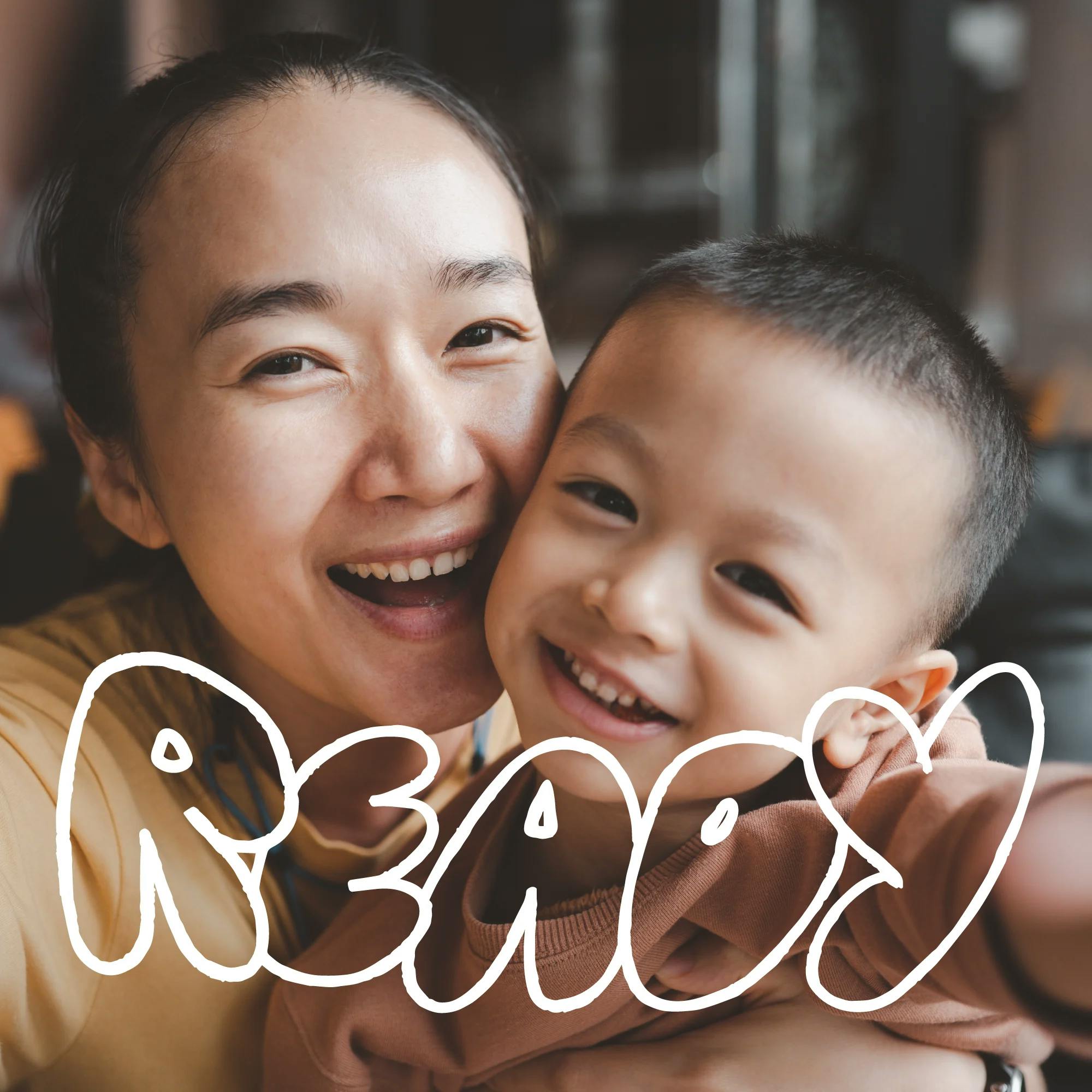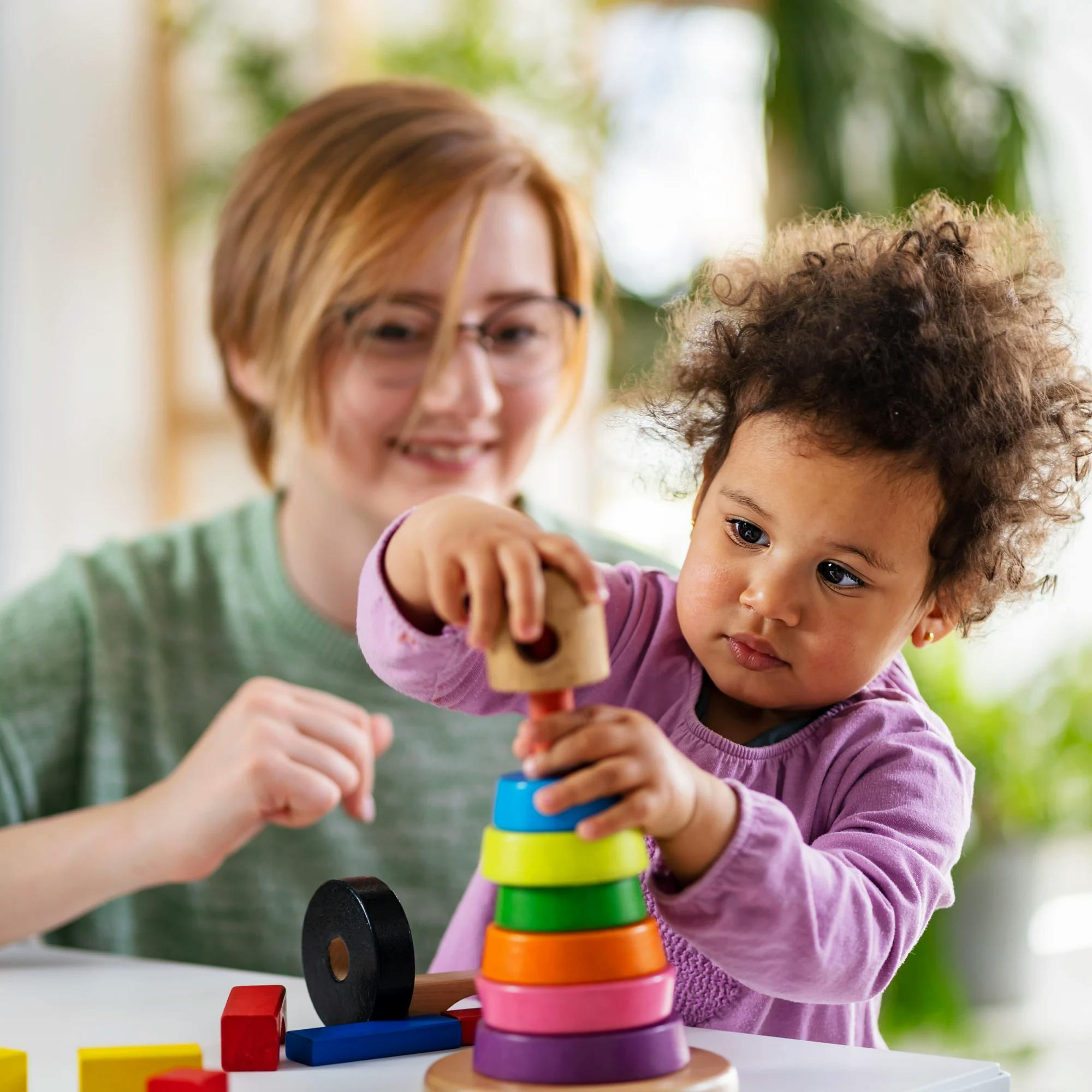At Expressable, we often work with families who have questions about speech delay and autism. It’s common for parents to wonder if a child’s late talking might be a sign of autism. We know that uncertainty can feel overwhelming.
It’s not unusual for delays to happen, but when a child doesn’t meet expected milestones, it’s natural to have concerns. However, while speech delays are common in autistic children, a speech delay doesn’t automatically mean autism. There are many reasons a child might take longer to talk. Understanding the differences can help parents and caregivers know how best to support their child’s development. Let’s break it down together.
Could your child have a speech delay?
Take our screenerWhat are typical communication milestones for babies and toddlers?
Knowing the key speech and language milestones for young children can help you understand what to expect and when your child might need help.
The first three years of a child's life are a critical time for speech and language development. From the moment a child is born, they begin to communicate. Parents hold their breath until they hear that first scream from their newborn. Within the first three months, babies typically look at their caregivers, respond to voices, smile in response to people, and react to sound. They begin to coo and cry, and we interpret these sounds to anticipate their needs.
Within 6 to 9 months, babies often recognize familiar people, enjoy games like "peek-a-boo," and start imitating sounds and actions. This is also the age when language starts to emerge, through babbling such as “mamama” and “bababa.” Around 12 to 18 months, children start saying their first words and using simple gestures like waving or pointing.


By 18 months, a child should have about 50 words that they use consistently. By age 2, their vocabulary rapidly expands to 250–300 words. They should begin combining words to form simple phrases. By age 3, children typically answer questions and follow 2-step directions, such as “First clean up your toys, and then go get your shoes.”
What’s the difference between a speech delay and autism?
Both an autistic child and a child with a speech delay may talk very little for their age, or not at all. They may both have trouble expressing their needs and wants, and use behaviors like tantrums to communicate. But there are some key differences between autism and a speech delay.
Children with speech or language delays still follow the same developmental path as their peers, just at their own pace. They may take longer to reach milestones, but they’re often eager to connect with others. These children enjoy hugs, seek out attention, and try to imitate what people around them do. They might get upset or lonely when left alone and show a natural desire for social interaction, even if their words come more slowly.
Autistic children, on the other hand, may show less interest in social engagement. They might prefer exploring objects or focusing on their own activities rather than interacting with people. Imitating others, like clapping or waving, may not come naturally. Understanding or using nonverbal cues, such as eye contact, facial expressions, or gestures, can also be more challenging.
When communication is difficult, autistic children might not seem frustrated in the same way as a child with a speech delay. Instead of trying to keep communicating, they may quietly return to an activity they enjoy. Many autistic children also engage in self-soothing behaviors, like watching spinning wheels, lining up toys, or mouthing objects. They might not consistently respond to their name or seek attention the way other children do.
Recognizing these differences between a speech delay and autism can help caregivers know how to meet their child’s unique needs. No matter the cause of a delay, every child can grow and thrive with the right support and encouragement.

Other communication-related signs of autism
Keep in mind that autism is a complex developmental condition that affects every child differently. There’s a common saying: “If you’ve met one child with autism, you’ve met one child with autism.” Here are a few other communication differences and challenges that autistic children may experience:
Slow to respond to attempts to gain their attention
Compulsively labels objects rather than commenting or requesting
Repeats words or phrases they just heard or that they heard days or weeks earlier (called echolalia), sometimes from their favorite show and not used in any context

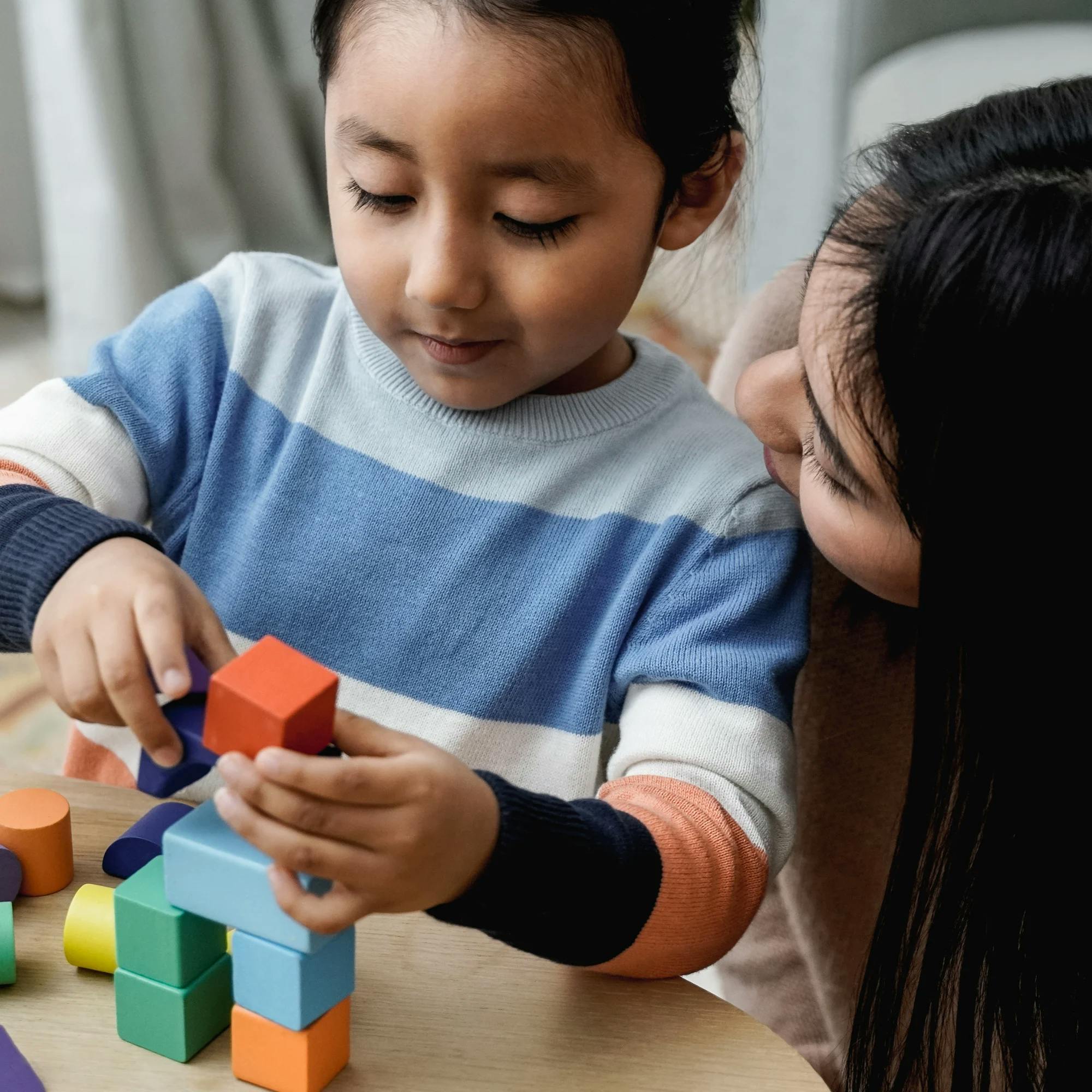
Uses a "robotic" speaking voice that lacks inflection or intonation
Challenges with reading and writing. Some autistic children may be able to read, but have difficulty comprehending the words on the pages (called hyperlexia)
Appears to look through people and lacks an awareness of others
Reacts strongly to sensory stimuli, such as loud sounds or certain food textures
Develops repetitive hand and finger mannerisms such as hand flapping
Difficulty with turn-taking and shows no interest in playing with family or other children
You can read more about communication, socialization, and behavior differences in autistic children here. Understanding these signs can guide caregivers toward the right resources and therapies to support their child’s development.

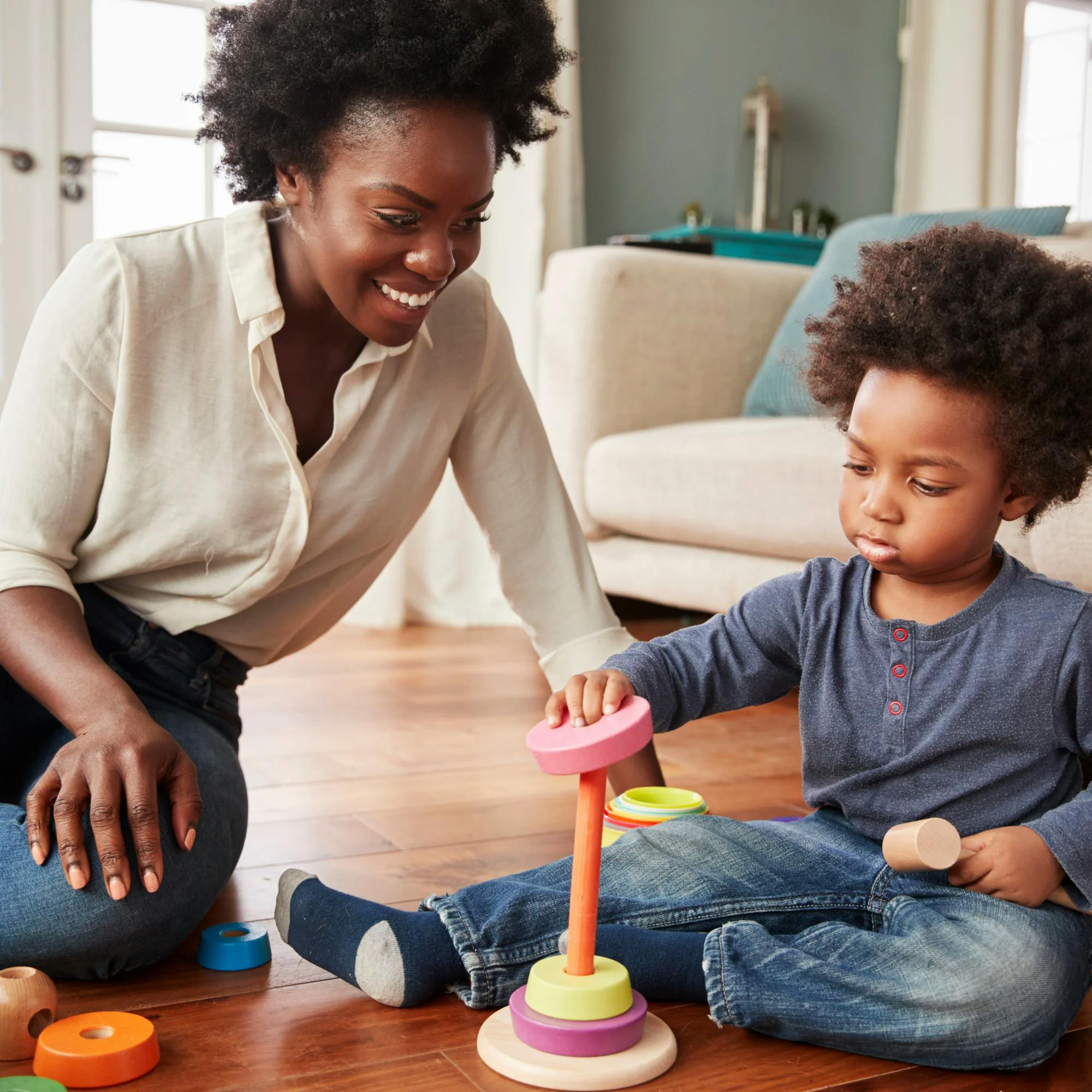
Other causes of speech delay in children
If your child has a speech delay, it’s natural to wonder why. Speech and language development can be influenced by many factors, and understanding the cause can help you find the right support. Let’s explore some common reasons children may have a speech delays:
Oral-motor challenges: Some children have difficulty coordinating their lips, tongue, and jaw to form speech sounds. This can be due to differences in the brain’s control of speech movements. These kids might also have trouble with feeding, which can benefit from therapy.
Developmental speech and language disorders: Sometimes, speech delays are linked to how the brain processes language. A child might struggle with making sounds, using words, or understanding what others say. These challenges can sometimes be an early sign of a learning difference.
Hearing loss: If a child can't hear sounds clearly, it can be hard for them to learn words. Hearing loss may result from frequent ear infections or other issues. A sign of this could be when a child responds to gestures, like pointing, but not to spoken words.


Limited interaction and stimulation: Children learn language by hearing and engaging with the people around them. If a child doesn’t have many opportunities for conversation, play, and interaction, their speech development might be slower.
Neurological conditions: Certain conditions, like cerebral palsy or brain injury, can affect the muscles needed for speech. These children might find it challenging to control their mouth, tongue, and lips, making it harder to speak clearly.
Every child’s journey is unique, and understanding what’s behind a speech delay is the first step to helping them grow and communicate. With patience, encouragement, and the right support, children can make meaningful progress.

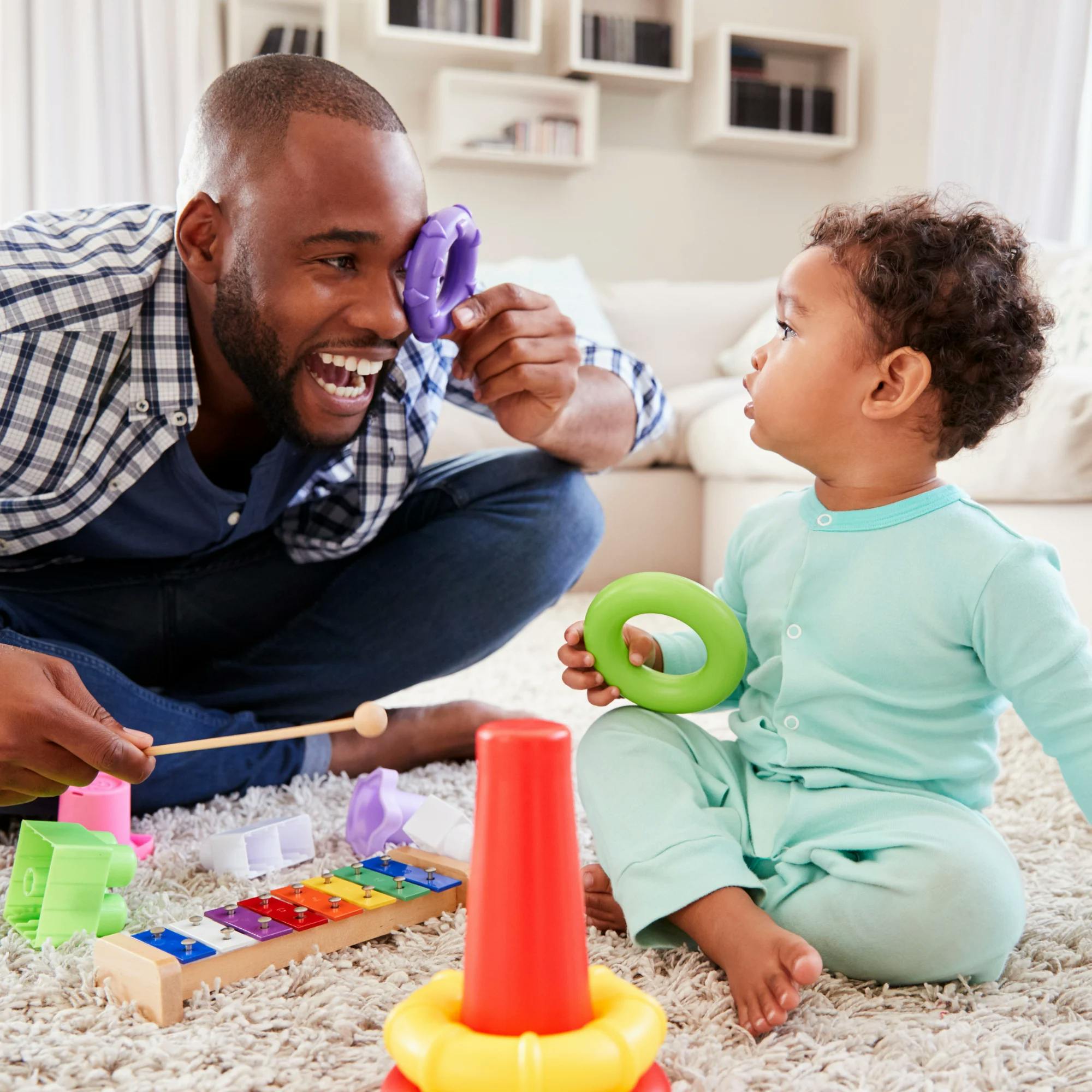
What’s the difference between speech and language delays?
Let's also discuss the difference between speech and language delays. While they are similar in some ways, there are key distinctions every parent should know.
"Speech" refers to how children say sounds and words to express their needs, wants, and desires. Children who have a speech delay still follow typical developmental patterns, but often at a slower rate than children of similar age.
For example, they may continue to struggle with hard-to-pronounce sounds that other children have mastered, such as the /r/, /s/, or /z/ sounds. This makes them harder to understand, and their speech sounds less mature.
"Language" is different from the physical way we produce sounds. It refers to the words we use and how we use them to share our thoughts, wants, and needs. Children with a language delay can often correctly pronounce sounds and words, but they can’t use these words to form intelligible phrases or sentences. Or, they may have trouble understanding what others are saying. They may struggle to process information, follow directions, or learn the meaning of new words.
Check out this informative guide to learn more about language delays.
Personalized care for your child
We support autistic children for who they are and help them build new skills. Get matched with a licensed speech therapist today.
 Get started
Get startedWhat to do if you think your child has a speech or language delay
If you're concerned, the first step is to discuss your child’s behaviors with your pediatrician. They may recommend seeing a developmental pediatrician or pediatric neurologist. In many cases, you may receive a referral to a speech-language pathologist, who can perform an evaluation and play a key role in your child’s treatment.
Early intervention with speech therapy is key to helping any child with a speech or language delay. Research has consistently shown that early intervention is crucial to helping a child catch up to their peers and better express themselves.


If your child is diagnosed with autism, your pediatrician may also recommend speech therapy. Speech therapy can help autistic people improve both their verbal and nonverbal communication skills, understand body language, ask and answer questions, and develop conversational skills. The goal of speech therapy for autism is to help children better function in day-to-day life and learn to communicate in a way that feels authentic and fulfilling to them.
No matter where your child is on their communication journey, your support, love, and patience can make all the difference. With the right help, every child has the potential to find their voice and share it with the world.
If you’re concerned about your child’s speech development, don’t hesitate to reach out. We’ll answer your questions and help you determine the next best steps. Find a speech therapist for your child today--we’re here to support your family every step of the way!
An important note: We believe that when speaking about any community as a whole, the best approach is to prioritize that community’s voices, needs, and preferences. Within the larger autism community, the current language preference is identity-first, which is why we use that language in our content. Expressable is committed to listening to and learning from the populations we serve. If and when their preferences change, we’ll adjust our approach accordingly.
How Expressable Can Help
Concerned your child isn't reaching age-expected milestones? Looking for communication support from a professional? Expressable is a national online speech therapy practice serving children and adults. We treat all major areas of communication and feeding, offer flexible hours including evenings and weekends, and accept most major health insurance plans. We’re proud to have earned more than 3,000 5-star reviews from our clients (4.9/5 average).
Our therapy model is centered on parent and caregiver involvement. Research proves that empowering caregivers to participate in their loved one’s therapy leads to better outcomes. That’s why we combine live, 1-on-1 speech therapy with personalized education and home practice activities for faster progress.
Communication is more than words. It’s how we share how we feel and show who we are. We’re here to help you or your child do just that.

 Alexis Irazoque, M.S., CCC-SLP
Alexis Irazoque, M.S., CCC-SLP


